
Harley-Davidson’s new LiveWire EV is seriously sporty, shockingly fast and whisper-quiet – everything a typical Harley isn’t. And that’s just the way Milwaukee wants it.
Words by Mitch Boehm
Photos courtesy of Harley-Davidson
The experience was so thoroughly unique, eye-opening and pleasurable that I kept doing it, over and over, like an addictive personality discovering alcohol or narcotics for the very first time.
I was doing photo passes for the camera crew along with a handful of other media types during the world riding launch of Harley-Davidson’s new LiveWire EV in the hills above Portland, Oregon, and just before we got to the turn-around point there was a half-mile straightaway preceded by a 70-mph right hander. Every time I’d exit that sweeper I’d tuck down in the LW’s cockpit, twist the throttle to the stop and, as I watched the LED speedo run into the triple digits, luxuriate in an accelerative bliss I’d never quite experienced before. Not in the F18 Hornet ride I’d lucked into more than a decade ago, and not even during a couple laps in a two-seat IndyCar at the Long Beach Grand Prix with driver Zach Veach a couple years ago.
Nope, it was an entirely different experience. The visceral, yank-your-arms-straight acceleration was there in spades, no doubt. Harley claims 0 to 60 in three seconds, after all, and I believe it. I seemed able to jump from 60 to 110 mph in just a few seconds, and I remember being quite happy the LW’s seat had a pronounced kick-up in back. Harley riders like instant-on power and torque, right? Well, this thing has plenty.
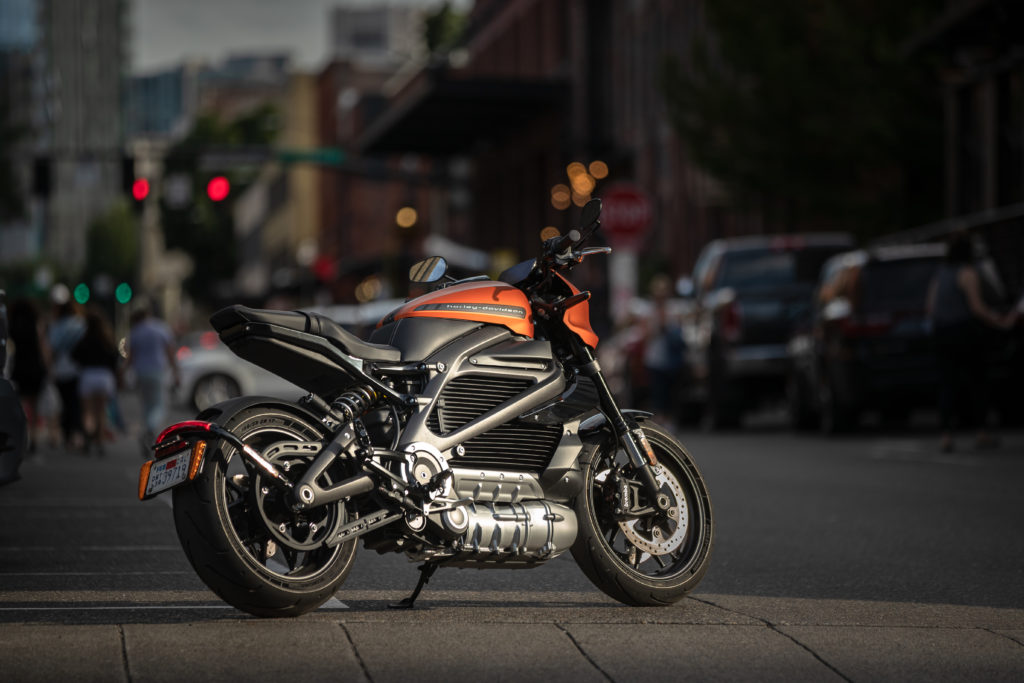
But it was the bike’s aural accoutrements – or lack of ’em – that ended up being so intoxicating when I let it eat like that. Whack the throttle, settle down into the sporty, lean-forward cockpit, and with a wind-noise whoosh alongside a turbine-like whine that reminded me of the speeder bikes ripping through the forest of Endor in The Empire Strikes Back, you’re catapulted into the next star system – or county – as if you’re making the jump to hyperspace in the Millennium Falcon.
Again and again, the whisper-quiet-but-frenzied feeling never got old, and with none of the mechanical cacophony you’d expect from a high-speed rush to 100 mph-plus aboard a traditional motorcycle reverberating in your semi-circular canals, the experience was unlike any I’ve experienced. Which I’m pretty sure is what the Harley folks in attendance were hoping for.
If you’ve not yet noticed, the LiveWire is about as diametrically opposed to a typical Harley-Davidson motorcycle as you can get, regardless of those 14 letters on the tank. There’s a big-ass – although stylized – battery and electric motor in place of the standard Big Twin; a lightweight alloy frame; race-spec suspension, wheels and brakes; a sporty cockpit fairing and semi-aggressive ergonomics; no exhaust system, and so no potato-potato when running; and a sporty and futuristic naked bike-like aesthetic that, without those 14 letters, you might think came from some high-end design house in Milan or New York or Paris.
Which is exactly what Harley-Davidson is after, of course. The company is not primarily looking to sway traditional Harley customers with the halo-esque LiveWire (and the electrified lineup it plans to roll out over the next few years) – though it will gladly accept any internal-combustion crossover sales, and certainly expects some. With the LW’s high-end electric motive power, naked-sporty new look, totally unique riding experience and a distinct lack of some of the cultural and mechanical barriers inherent in traditional motorcycles (noise, shifting gears, etc.), Milwaukee is after a largely new market here: non-traditional riders looking for something very different and, more likely, non-riders that haven’t yet experienced the thrills we motorcyclists already recognize. Considering the latter group constitutes 97% of the population, it’s a damn big potential market.
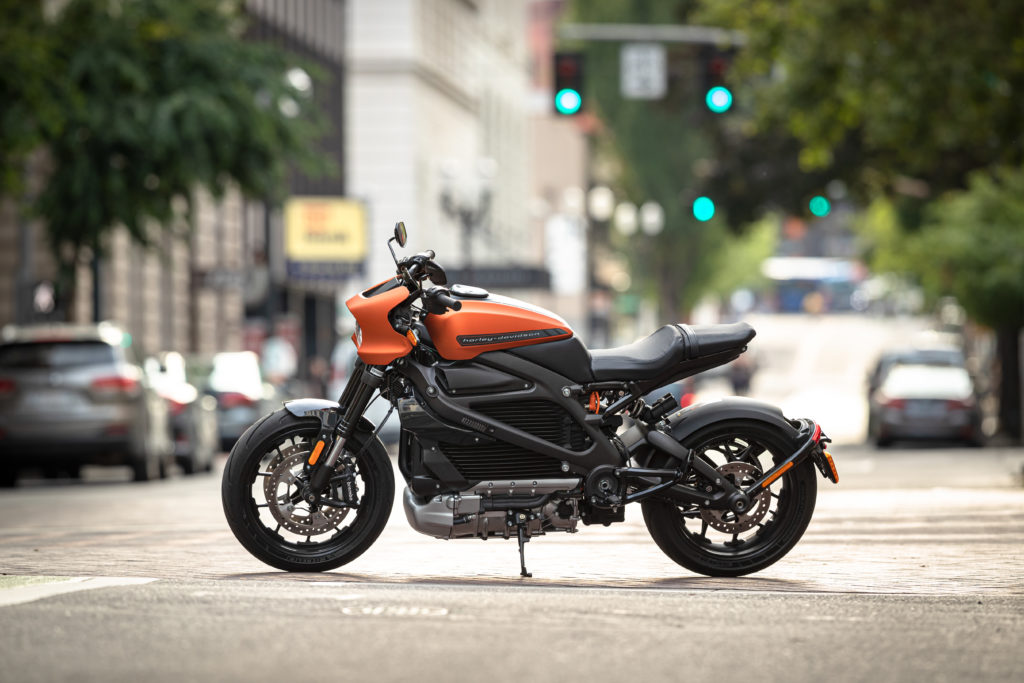
Harley-Davidson, of course, can’t continue to exist solely selling Big Twins to aging baby boomers who, in a decade or so, will be mostly out of motorcycling. Like the rest of the motorcycle industry, Harley needs new blood, and feels a line of electric two-wheelers, led by the high-end and high-price ($29,795) LiveWire, is a prime way to reach them. They’re not alone, either.
“It’s a bold goal, helping encourage and develop the next generation of riders,” Harley-Davidson CEO Matt Levatich told me over breakfast at the launch, “but we think we’re on the right track with the LiveWire, our future electric offerings, and our More Roads To Harley-Davidson efforts. Motorcyclists know that nothing is more spectacular than two-wheeled travel, right? Spreading that word among a more general population, and building riders in addition to building great motorcycles…well, that seems like a pretty strong concept to us. And that’s the basic idea here.”
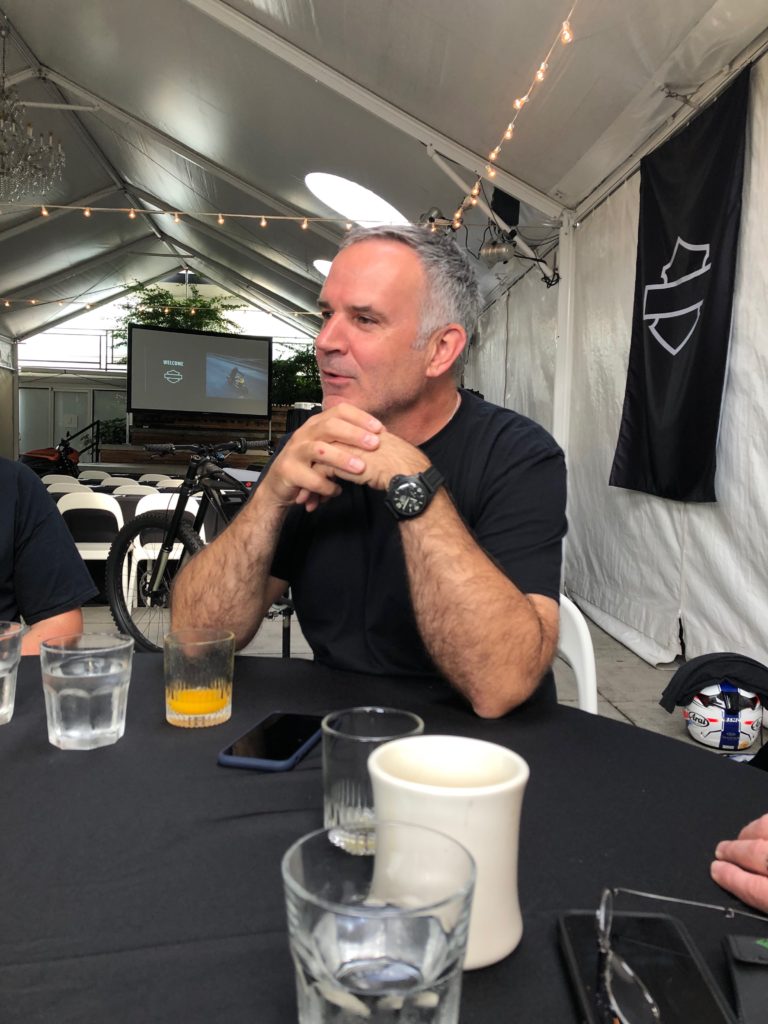
Levatich mentioned many of the things fighting for potential customers’ attention these days, especially millennials, and sees EVs from the top-of-the-line LiveWire to electrified kids bikes and everything in between as a way to reach them. “We see the LiveWire and our EV technology in general being able to cut through a lot of the noise out there,” he told me. “Not just via the uniqueness of the electric riding experience itself, which is pretty substantial, but by the lack of barriers to entry into the sport – maintenance, shifting gears, etc.
“That said,” he continued, “we are not limiting in any way our emphasis on traditional Harleys; if anything, we’re more energized than ever about Sportsters and Softails and baggers and the like. But we do need to branch out, and see electrification as a key avenue there. We very much intend to lead the way in the electrification of the sport.”
If leading the way means introducing the most advanced electrically powered motorcycle on the planet, then Milwaukee is very clearly putting its money where its mouth is. I was only able to get a few hours and a bit less than 100 miles on a LiveWire during the July 11 launch, but thanks to a thorough tech and marketing briefing, and following that a morning and afternoon ride around town and on some of the fast and curvy roads in the hills surrounding Portland proper, I got a pretty good idea of what it is and how it works.

First off, there’s a lot of technology here. Leading the way is an all-new and stylized H-D Revelation electric motor, which is liquid-cooled, offers 105 horsepower (78 kW) and 86 foot-pounds of torque, and produces 100 percent of that torque the instant the throttle is turned. It gets its power from a 15.5kWh high-voltage battery, which H-D calls RESS for Rechargeable Energy Storage System. Range is, according to H-D, 146 miles in the city and 95 miles of combined stop-and-go and highway riding, with overnight Level One charging via an included charger cable and, at approximately 150 U.S. dealers nationwide (with more to come over time), Level 3 one-hour charging.
More acronyms include Cornering Enhanced Anti-lock Braking (C-ABS), Cornering Enhanced Traction Control (C-TCS) and Drag-Torque Slip Control (DSCS), all designed, H-D says, to increase rider confidence and control in less-than-ideal situations. There’s a 4.3-inch color touchscreen centered just above the handlebar, seven selectable Ride Modes (Sport, Road, Range and Rain, plus three customizable modes) and HD Connect, which link owners to their motorcycles (free initially, then for a monthly fee) and offers tons of status and service information via a smart phone using the Harley-Davidson app.
Climb aboard and you’re immediately struck by the riding position, which is more Ducati Monster or Suzuki GSX-S than Sportster or Softail. Its ergos invite a slight forward lean, with semi-rearset pegs, a mildly upward-bend handlebar and scooped seat locking you into position pretty securely, the reason for that becoming apparent soon enough. It all feels reasonably normal … right until you spy the large touchscreen info-panel mounted front and center and the non-existent clutch lever. So you know things are about to change pretty profoundly.
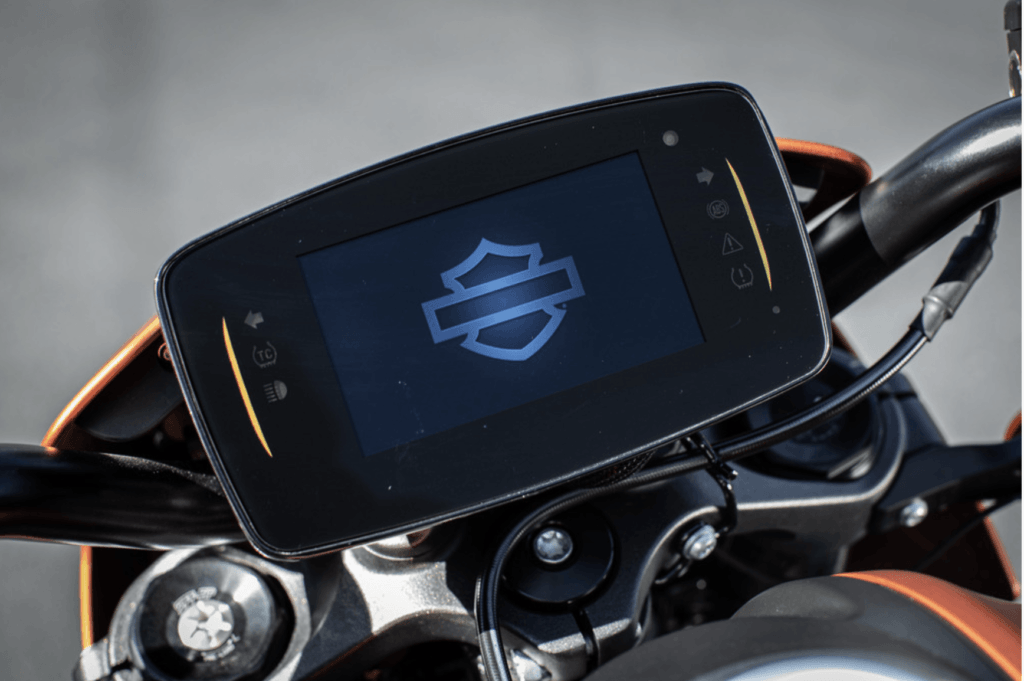
And they do, of course, the instant you push the starter. In place of chugga-chugga/potato-potato rumble you have silence … just the color info-screen letting you know with a green light that things are ready to roll. Give the throttle a little twist and you’re off, the bike moving forward smoothly and predictably to your right wrist’s commands.
In stop-and-go traffic I found the LW super easy to ride, which says a lot about the refinement that’s been baked into it during eight years of development – the concept launching originally in 2011 with a rough electric prototype in Milwaukee. Throttle response at slower speeds was immediate, linear and quite controllable, the bike demonstrating no lurching or driveline lash during on/off transitions or abrupt throttle inputs. Steering was light and precise, the brakes crisp and predictable, both of which helped the bike feel considerably lighter than its 500-plus wet weight might suggest.
And of course it was totally quiet, eerily smooth and almost completely unobtrusive in an aural and vibrational sense. The Harley folks call this “Minimal NVH,” which means minimal noise, vibration and harshness. I can tell you it’s less than minimal; it’s nearly non-existent. Accelerating away from a light or tearing down a side street you find yourself listening to wind noise, the sounds of the city around you and even the tires slapping against the asphalt. It’s just an entirely new experience, and one that proved compelling to me all day long.
You’ll get that same feeling when you ride the LiveWire harder and faster, too, which I did the instant our group began climbing into the foothills. The bike’s sporty ergonomics should have been a clue to just how competent the LiveWire would be in that environment, but clichés ruled: a) it’s a Harley-Davidson, and b) it’s an EV. How sporty could it be?
Damn sporty, it turns out. I immediately found myself running into turns faster, carrying more corner speed through them, looking for pavement holes and irregularities to hit while leaned over to see how the chassis behaved, and then hammering the throttle at the exit, trying – in vain, for the most part – to find what I figured would be mid-level traction, suspension and handling limits. I didn’t find much of that at all, which tells me all the bluster I’d heard at the tech briefing about chassis and engine refinement, optimized frame geometry, suspension component quality and settings, power delivery and the like, wasn’t bluster at all. The thing is shockingly fast, amazingly smooth, easy to get used to and ride quickly, forgiving and, most of all, Big Fun. Oh … did I mention it’s fast?
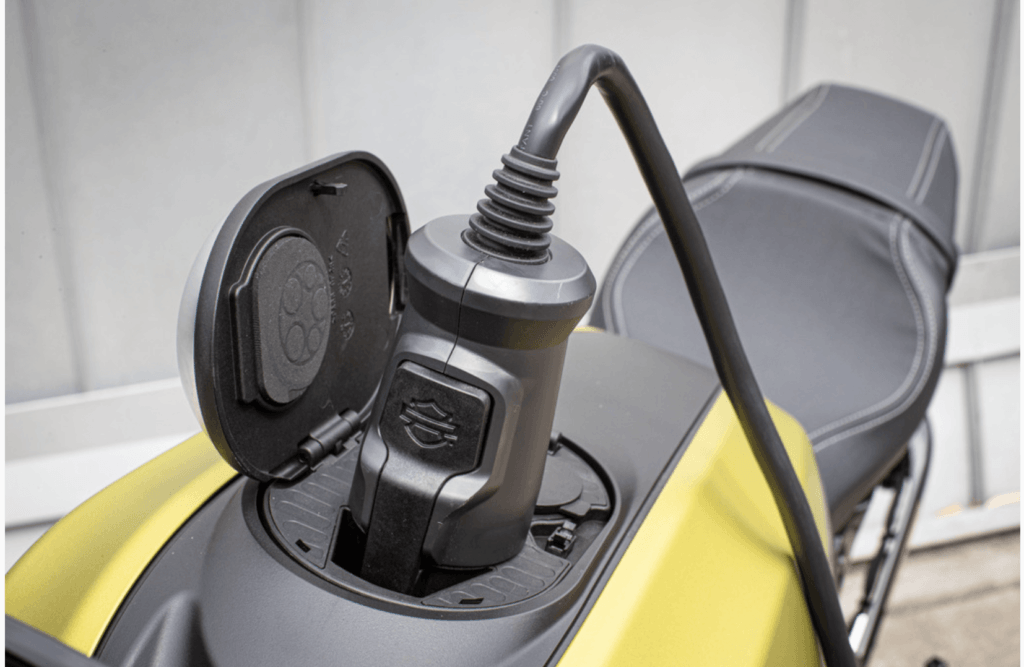
I’d been in Road mode during those city miles and it felt perfect there; plenty of smooth power and grunt, with just the right amount of re-generative braking resistance. I tried the Sport mode once we got into the hills, but the regen felt a bit too strong for my liking, so I went back to the Road setting and was happy all morning and afternoon. Dry weather meant I didn’t get to try the Rain setting, and we didn’t get all that close to running out of juice, so Range Mode wasn’t needed, either.

It’s rarely perfect with an all-new bike; few are that way right out of the box. Suspension settings, which worked really well for my XXL-size butt, are probably too firm for average-sized humans in terms of spring rate and compression; I heard that from a couple guys in my group. The bar could use a little more pullback, and maybe an inch or two extra in height, too. A niggle, I know. The seat seemed a little thin on padding, but wasn’t bad. (Or maybe I was too enthralled with the power and handling to notice?) And the seat-to-leg distance seemed a little tight, though I’m sure that’s my numerous-surgery knees talking. Otherwise, I was thoroughly impressed with the LiveWire’s functionality and at-speed competency, especially the smoothly refined way it tackled stop-and-go, around-town riding and the more aggressive, sporty abuse we heaped on it later in the day.
The larger questions, of course, involve range and price. The first isn’t going to be quite enough for a lot of folks, and the latter is likely to be too much. That’s just the way things stand at this point in EV development. You’re either on board and willing to accept the trade-offs for the bennies, or you’re a skeptic – or, worse, a hater. There doesn’t seem to be a lot of middle ground here, and that’s probably true for many of the two-wheeled traditionalists that read this magazine.
But consider a few things, if you will. EVs are coming, like it or not, and despite the steep tariff and the relative lack of range with the LiveWire (and most higher-end EVs, really), this is a superbly designed, compellingly competent, seriously fun and fascinating-to-ride motorcycle … a Halo bike that should represent Harley-Davidson pretty well as it moves more forcefully into the EV space in the coming years with a wide range of two-wheeled stuff, from mid-range EV models to mountain bikes to kids bikes and lots more.
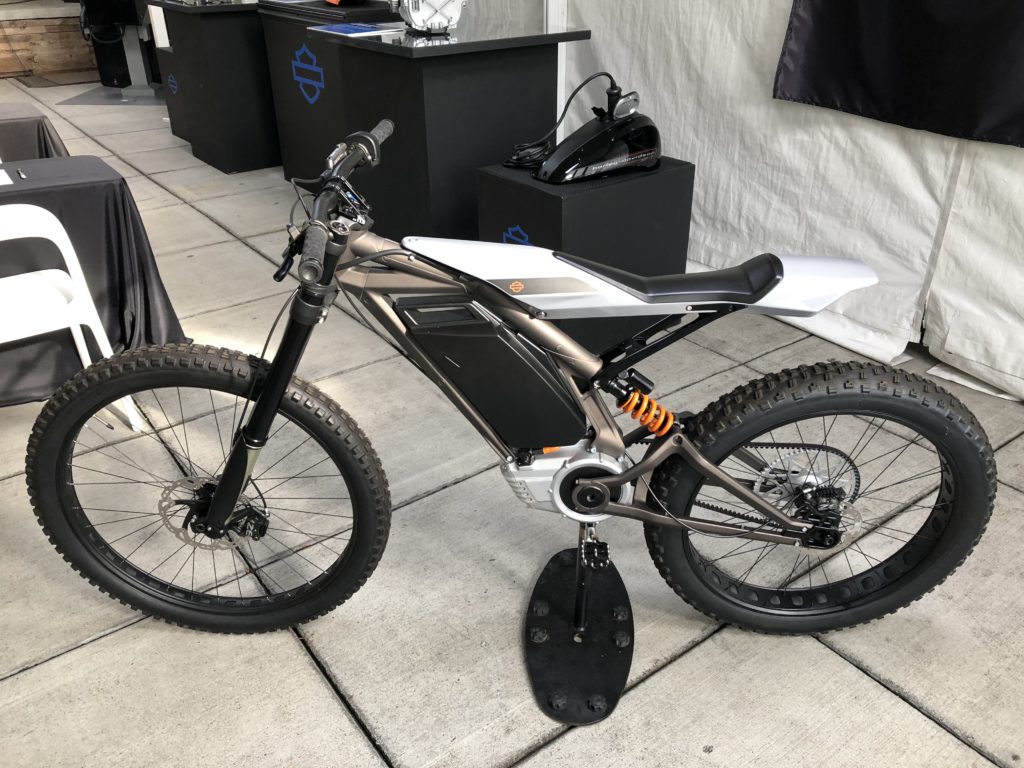
There’s very likely plenty of sales and market share to be had here, all of which should help keep the Motor Company we all (mostly) love and respect healthy and happy and pumping out all the unique, eye-opening and pleasurable motorcycles we love to look at, lust after and ride – whether they run on gasoline or batteries.
We’re addicted … what can we say?

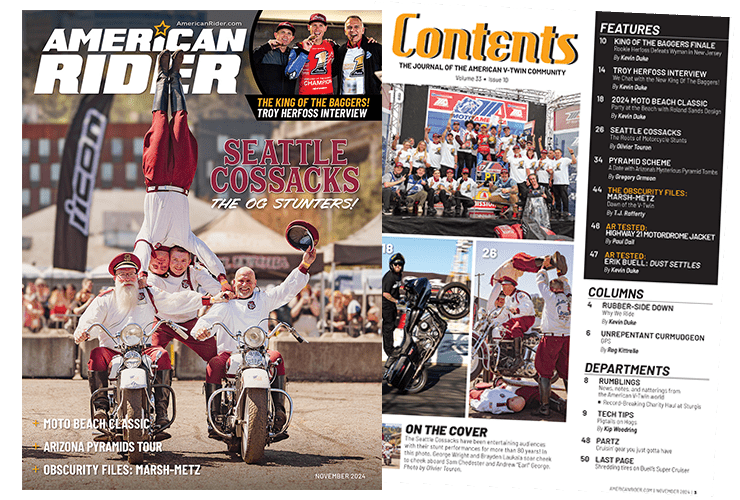
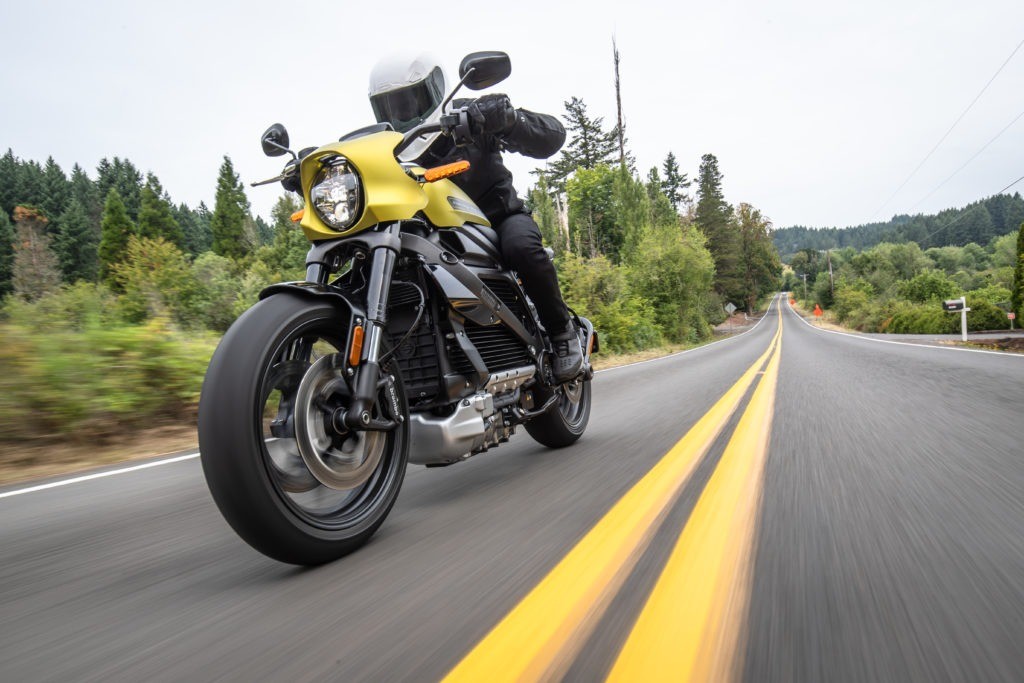

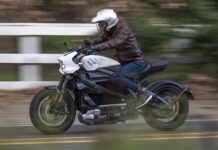

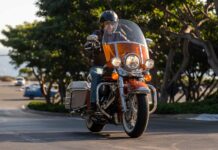
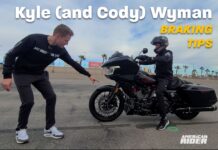











[…] To read Boehm's full review, click here. […]
[…] With Boehm’s Harley-Davidson LiveWire review in this issue, some additional battery talk made some… […]
[…] all-electric sub-brand, LiveWire. H-D is doubling down on its electric LiveWire motorcycle, tested here, with a new internal organization dedicated to developing a variety of […]
[…] Thunder Press editor Mitch Boehm summed up the experience after his Harley Davidson LiveWire test ride: […]